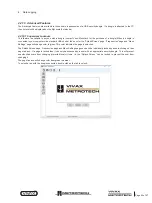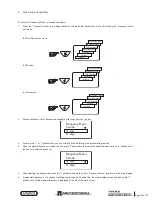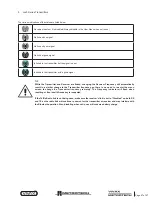
™
Page 59 of 67
6 Using the Accessories
55
8kFF LOW
mA
26 dB
8KFF
Log
6
4G
Plug in the A-frame to the receiver accessory socket. When the receiver is switched on, it will automatically default to the A-frame
screen.
Note also the Auto-shutdown setting will be set to “Never shut down” when the A-frame is attached.
26 dB
8KFF
Log
6
4G
Image for reference only and may differ from the actual image
Remove the plastic spike covers from the A-frame. Walk along the route of the line placing the spikes of the A-frame in the
ground (with the green leg pointing away from the transmitter connection point) every two or three paces.
If starting near the transmitter, the arrow on the display will point away from the ground point. As the distance from the
transmitter increases, the dB reading will reduce and eventually the arrow will fluctuate or disappear altogether. This is because
the fault location is further along the line. Use the left/right arrows to ensure the A-frame is positioned over the line and continue
placing the A-frame in the ground every two or three paces. If necessary, use long presses of the “M” pushbutton to enter the
locate screen allowing the user to confirm the position of the target line. Use a long press of the “M” pushbutton to scroll through
the screens to re-enter the A-frame mode.
20 dB
8KFF
4G
Log
6
26 dB
8KFF
Log
6
4G
(Note that the A-frame is not shown connected to the receiver so as to simplify the diagram).
Eventually, the A-frame will detect the fault signal and the “Fault Find” arrow will point forward. Continue moving forward, it may
be worth reducing the distance between measurement points as the fault is neared. The dB reading will increase as the fault is
neared. Maximum reading will be just before and just after the fault. When over the fault, the dB reading will drop and the arrow
will flip backward indicating that the position of the fault has been passed.
Carefully place the A-frame before and after the fault to pinpoint the position. Repeating this across the line direction will pinpoint
the fault laterally. The fault will be at the point where the lateral fault is identified.












































